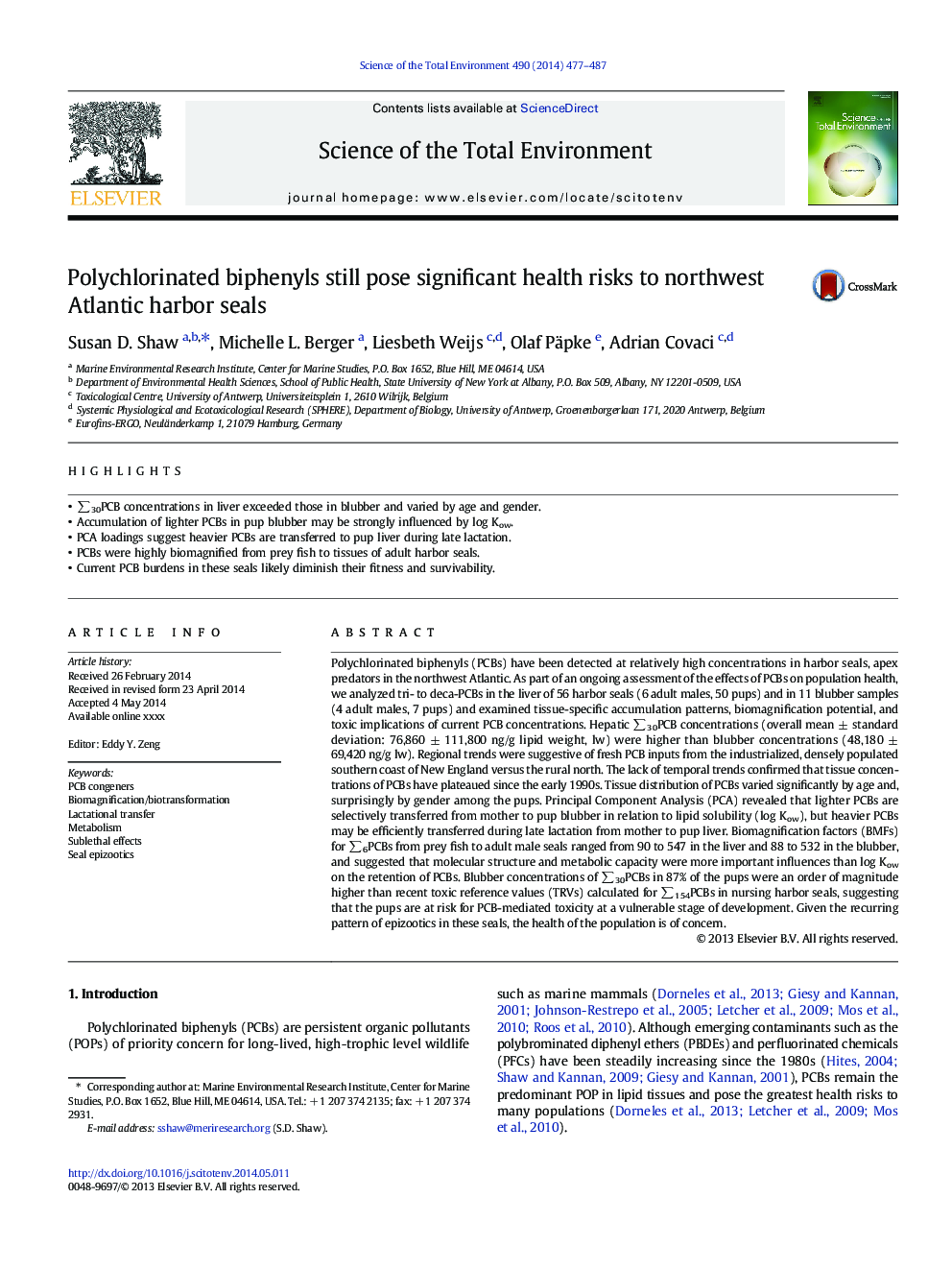| کد مقاله | کد نشریه | سال انتشار | مقاله انگلیسی | نسخه تمام متن |
|---|---|---|---|---|
| 6329126 | 1619780 | 2014 | 11 صفحه PDF | دانلود رایگان |
عنوان انگلیسی مقاله ISI
Polychlorinated biphenyls still pose significant health risks to northwest Atlantic harbor seals
ترجمه فارسی عنوان
دیفنیلهای پلی کربنات همچنان خطرناکترین عوارض بهداشتی برای مهر و موم شمال غربی اقیانوس اطلس هستند
دانلود مقاله + سفارش ترجمه
دانلود مقاله ISI انگلیسی
رایگان برای ایرانیان
کلمات کلیدی
موضوعات مرتبط
علوم زیستی و بیوفناوری
علوم محیط زیست
شیمی زیست محیطی
چکیده انگلیسی
Polychlorinated biphenyls (PCBs) have been detected at relatively high concentrations in harbor seals, apex predators in the northwest Atlantic. As part of an ongoing assessment of the effects of PCBs on population health, we analyzed tri- to deca-PCBs in the liver of 56 harbor seals (6 adult males, 50 pups) and in 11 blubber samples (4 adult males, 7 pups) and examined tissue-specific accumulation patterns, biomagnification potential, and toxic implications of current PCB concentrations. Hepatic â30PCB concentrations (overall mean ± standard deviation: 76,860 ± 111,800 ng/g lipid weight, lw) were higher than blubber concentrations (48,180 ± 69,420 ng/g lw). Regional trends were suggestive of fresh PCB inputs from the industrialized, densely populated southern coast of New England versus the rural north. The lack of temporal trends confirmed that tissue concentrations of PCBs have plateaued since the early 1990s. Tissue distribution of PCBs varied significantly by age and, surprisingly by gender among the pups. Principal Component Analysis (PCA) revealed that lighter PCBs are selectively transferred from mother to pup blubber in relation to lipid solubility (log Kow), but heavier PCBs may be efficiently transferred during late lactation from mother to pup liver. Biomagnification factors (BMFs) for â6PCBs from prey fish to adult male seals ranged from 90 to 547 in the liver and 88 to 532 in the blubber, and suggested that molecular structure and metabolic capacity were more important influences than log Kow on the retention of PCBs. Blubber concentrations of â30PCBs in 87% of the pups were an order of magnitude higher than recent toxic reference values (TRVs) calculated for â154PCBs in nursing harbor seals, suggesting that the pups are at risk for PCB-mediated toxicity at a vulnerable stage of development. Given the recurring pattern of epizootics in these seals, the health of the population is of concern.
ناشر
Database: Elsevier - ScienceDirect (ساینس دایرکت)
Journal: Science of The Total Environment - Volume 490, 15 August 2014, Pages 477-487
Journal: Science of The Total Environment - Volume 490, 15 August 2014, Pages 477-487
نویسندگان
Susan D. Shaw, Michelle L. Berger, Liesbeth Weijs, Olaf Päpke, Adrian Covaci,
